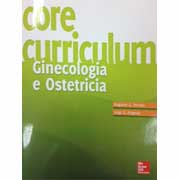227. COMPARISON OF TWO DIFFERENT LAPAROSCOPIC TECHNIQUES FOR THE TREATMENT OF THE ENDOMETRIAL CANCER
F. Ghezzi2, L. Frigerio3, A. Cromi2, A. Gallo3, L. Carlini3, V. Bergamini1, N. Donadello2,P. Beretta2, M. Franchi1
Objective: To evaluate the feasibility, safety and adequacy of two different approaches for the treatment of endometrial cancer. Methods: Consecutive patients with endometrial cancer who underwent laparoscopic systematic pelvic lymphadenectomy, bilateral salpingo-oophorectomy, and hysterectomy were enrolled. In addition to the 10-mm umbilical laparoscope, one team of surgeons performed the procedure placing three 5-mm ancillary trocars in the lower abdomen and removing the lymph nodes through the vagina (group 1) while a second team used a 10 mm trocar in addition to the three 5 mm ancillary trocars (group 2). In this group the lymph nodes were removed trough the 10 mm trocar. The surgical experience was similar between groups. Results: A total of 51 women were enrolled. Thirty three and 18 patients were enrolled in group 1 and in group 2, respectively. No difference was found in the median (range) patients age [60 (41-77) vs. 58 (38-77), p=0.47] and BMI [24 (19-46) vs. 26 (19-35), p=0.86]. The median number of lymph nodes was significantly higher in group 1 than in group 2 [20 (11-44) vs. 15 (1-23), p<0.01]. The operative time was similar in the two groups [210 (150-360) vs. 225 (80-320), p=0.87]. The incidence of intraoperative (1/33 vs. 1/18) and postoperative complications (3/33 vs. 3/18) was similar between groups. Conclusion: The use of three 5-mm ancillary trocars for the laparoscopic management of endometrial cancer is feasible and allows the removal of an adequate number of lymph nodes. This could reduce the risk of incisional hernias and port site metastases.
